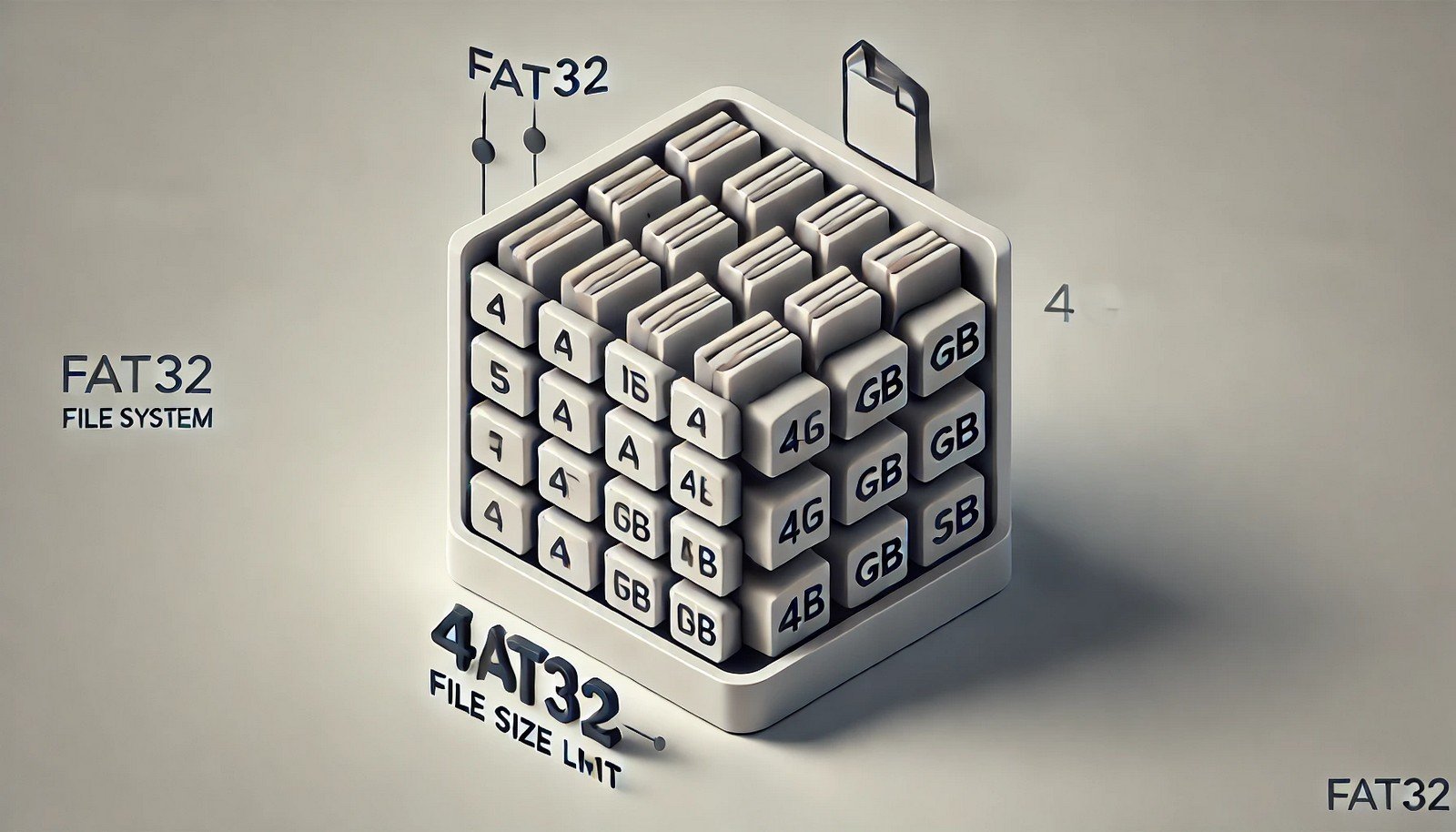FAT32
 (Representational Image | Source: Dall-E)
(Representational Image | Source: Dall-E)
Quick Navigation:
- FAT32 Definition
- FAT32 Explained Easy
- FAT32 Origin
- FAT32 Etymology
- FAT32 Usage Trends
- FAT32 Usage
- FAT32 Examples in Context
- FAT32 FAQ
- FAT32 Related Words
FAT32 Definition
FAT32 (File Allocation Table 32) is a file system used for organizing and managing files on storage devices. It was introduced by Microsoft in Windows 95 OSR2 to replace FAT16, allowing for larger partition sizes and better storage efficiency. FAT32 supports up to 2TB partitions and individual file sizes of up to 4GB. Despite being an older system, it remains widely used due to its compatibility across multiple operating systems, including Windows, macOS, and Linux, as well as external storage devices like USB flash drives and memory cards.
FAT32 Explained Easy
Imagine you have a big bookshelf, and you want to keep track of where each book is placed. FAT32 is like a giant table of contents for a computer, helping it find files quickly. However, the bookshelves have a limit—each book (file) can't be bigger than 4GB, and the entire shelf (partition) has a maximum size. That’s why some people use newer file systems for bigger files.
FAT32 Origin
FAT32 was developed by Microsoft and introduced in 1996 as an improvement over FAT16. It was designed to handle larger storage capacities and improve efficiency in file allocation. Initially used in Windows 95 OSR2, FAT32 became the default file system for many storage devices, including USB drives and SD cards. Its cross-platform support made it a preferred choice for external storage.
FAT32 Etymology
The name "FAT32" derives from "File Allocation Table," which is the structure used to store information about files. The "32" indicates that it uses a 32-bit addressing scheme, improving storage efficiency over previous versions.
FAT32 Usage Trends
Although FAT32 is largely replaced by more modern file systems like NTFS and exFAT for internal storage, it remains widely used for external devices due to its universal compatibility. Many USB flash drives, memory cards, and external hard drives come preformatted with FAT32 to ensure they work across different operating systems, gaming consoles, and multimedia devices.
FAT32 Usage
- Formal/Technical Tagging:
- File System
- Data Storage
- Cross-Platform Compatibility - Typical Collocations:
- "FAT32 file system"
- "Format USB to FAT32"
- "FAT32 vs NTFS"
- "FAT32 partition limit"
FAT32 Examples in Context
- A user formats a USB flash drive to FAT32 to ensure it works on both Windows and macOS.
- Many gaming consoles require external hard drives to be formatted as FAT32 for compatibility.
- FAT32 is commonly used in SD cards for cameras and drones to maximize device compatibility.
FAT32 FAQ
- What is FAT32?
FAT32 is a file system used for organizing and managing files on storage devices, offering wide compatibility but with a 4GB file size limit. - How does FAT32 differ from NTFS?
FAT32 is more compatible across platforms but has a 4GB file size limit, while NTFS supports larger files and offers better security features. - Can FAT32 store files larger than 4GB?
No, FAT32 has a maximum file size limit of 4GB. For larger files, exFAT or NTFS is recommended. - How do I format a drive to FAT32?
You can format a drive to FAT32 using built-in tools like Disk Management in Windows or Disk Utility in macOS. - Why do USB drives come preformatted with FAT32?
Because FAT32 ensures compatibility across different operating systems, gaming consoles, and media devices. - Can I convert FAT32 to NTFS without losing data?
Yes, Windows provides a command-line tool (convert drive_letter: /fs:ntfs) to convert FAT32 to NTFS without data loss. - Is FAT32 good for modern computers?
Not for internal drives, as it lacks security and large file support. However, it is still useful for external storage. - What are the main limitations of FAT32?
The 4GB file size limit and 2TB partition size limit make it less suitable for large-capacity drives. - Which devices still use FAT32?
USB flash drives, SD cards, external hard drives, and gaming consoles often use FAT32 for cross-platform compatibility. - What is the best alternative to FAT32?
exFAT is a good alternative, as it removes the file size limit while maintaining compatibility with most modern devices.
FAT32 Related Words
- Categories/Topics:
- File Systems
- Storage Management
- Cross-Platform Data Sharing
Did you know?
The FAT32 file system was initially designed for Windows 95 OSR2 but is still used in modern devices today. Despite being nearly three decades old, it remains the preferred choice for USB drives, SD cards, and gaming consoles due to its universal compatibility.
PicDictionary.com is an online dictionary in pictures. If you have questions or suggestions, please reach out to us on WhatsApp or Twitter.Authors | Arjun Vishnu | @ArjunAndVishnu

I am Vishnu. I like AI, Linux, Single Board Computers, and Cloud Computing. I create the web & video content, and I also write for popular websites.
My younger brother, Arjun handles image & video editing. Together, we run a YouTube Channel that's focused on reviewing gadgets and explaining technology.



Comments powered by CComment